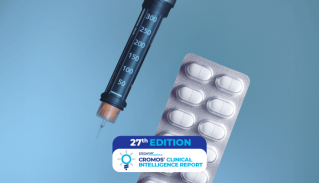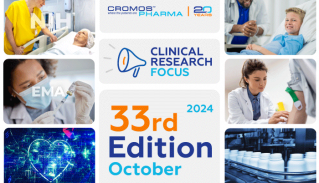
Clinical Trial Success Starts with an Airtight Protocol
A well-designed clinical trial protocol is paramount to ensuring the success of a clinical trial, and therefore, should be approached with utmost consideration. Protocols are more than just instruction manuals; they are multifunctional and detailed roadmaps that are the core mechanism for translating a brilliant idea into an effective clinical trial. When writing a protocol, it is important to carefully consider its key objectives, from scientific methodology to patient safety parameters, and finally, the ability to readily operationalize protocol execution and efficient study conduct
In this brief overview Darina Gromyko, MD, PhD, and Cromos Pharma’s Senior Medical Writer, outlines what a well-structured protocol should include and shares useful tips on its writing.
7-tips for writing a successful clinical trial protocol:
Understand the current requirements for protocol writing
This means being fully aware of up-to-date ICH requirements, such as ICH Guideline for Good Clinical Practice E6 (R2), ICH guideline E8 (R1) on general considerations for clinical studies, and ICH M11 guideline on clinical electronic structured harmonised protocol template. Attention should also be paid to local laws and regulations in the country where the trial will be conducted, such as EU Clinical Trial Regulation, FDA regulations relating to Good Clinical Practice and Clinical Trials; local requirements for decentralised clinical trials, complex designs, and diversity; and compliance with local General Data Protection Regulations.
Use appropriate content guidelines and templates for a protocol
Ensure that all important details are incorporated compiling a content list that references all relevant ICH requirements and regulatory guidelines (e.g., FDA, EMA). If you are using a protocol template provided by a third party (e.g., CRO, external Medical Writer), ensure that it is up to date with current regulations (e.g., new EU CTIS).
Develop the synopsis and the schedule of events as early as possible
Developing the synopsis and finalizing the schedule of events early helps avoid inconsistencies and the need for amendments later. It also allows various stakeholders to opine on the design, the inclusion/exclusion criteria, and quality-critical factors that may require adjustments. Finally, in the synopsis the schedule of events is often the first element of the protocol enabling CROs to quickly determine the most appropriate sites and sites to accurately estimate site budgets/per patient fees.
Use scientific approach to clinical trial design, planning, and content creation
The primary objectives of every clinical trial should reflect the key research question, which should be stated clearly and explicitly. Avoid the inclusion of too many endpoints/outcome measures as this may lead to both clinically and statistically confusing results and burdensome patient assessments. It is critical to choose endpoints that are well-defined, measurable, clinically meaningful, and relevant to the patients being studied. Selecting incorrect endpoints can have a catastrophic outcome for the entire clinical program. We have found that there is a direct correlation between simplicity, clarity, and practicality of the protocol and its successful implementation.
Provide detailed descriptions of assessments and operational criteria in the protocol
Provide clear and detailed information, on the “who, what, when, where and how” of study assessments and schedules, so that clinical researchers can perform trial-related activities and procedures effectively and consistently. Establish well-defined operational criteria in the protocol as they provide a clear understanding of study feasibility, selection of suitable clinical trial sites, centres with specialized equipment, selection of analytical laboratories, and processes to ensure data integrity. As soon as it is conceptualized, it’s a good exercise to have your clinical operations staff check for possible inconsistencies or misunderstandings of interventions and assessments.
Ensure ease of reference
It may seem obvious, but it is imperative to organize the layout of your protocol in a way which allows readers to efficiently locate specific sections. Regardless of who is reading the protocol, regulatory authorities or clinical site staff, a proper layout will make following the protocol a more straightforward process. For next-generation protocols that are being developed in the face of existing protocol requirements and ever-emerging new protocol requirements, the ICH M11 guideline on clinical electronic structured harmonised protocol can be used, and professional medical writing organizations (American Medical Writers Association (AMWA), European Medical Writers Association (EMWA)) can be consulted for guidance on the applicability of the new protocol requirements.
Exercise rigorous risk-assessment
Finally, to eliminate inconsistencies and to reduce the possibility of downstream mistakes, every protocol should be subjected to a rigorous risk assessment before it is submitted to the regulators. Whenever possible, it is strongly recommended to involve Key Opinion Leaders (KOLs), local clinicians with experience in the given therapeutic indication, and CRO medical partners who can provide objective analyses of potential issues with the successful trial conduct.
Cromos Pharma has extensive experience in developing protocols, aiding in scientific and operational input, and adjusting protocols to country-specific requirements. Our medical writing team is comprised of MDs and PhDs in biomedical sciences. Over the past 19 years, they have created a vast number of submission dossiers for all phases of global clinical trials, in a wide range of therapeutic indications.






























